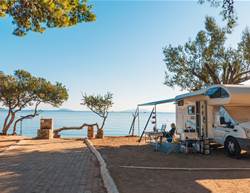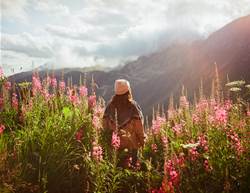Study after study has proven the health benefits of surrounding yourself with nature. When you take a gentle walk through the trees, slowing your senses and absorbing what’s happening around you – a practice known in Japan as shinrin-yoku, or forest bathing – your body chemistry actually changes. Your cortisol levels drop, your heart rate and blood pressure are also lowered.
The rewards don’t stop there. Regular immersion in nature reduces the risk of diabetes, lowers your cholesterol levels and improves your mental health. So, what are you waiting for? Get out there and explore one of these spectacular bush destinations.

A river runs through it: Daintree Rainforest, Far North Queensland
Zipping up my wetsuit, I’m having decidedly conflicted feelings about the fact that I’m about to jump in a river on the edge of the Daintree Rainforest in Far North Queensland and snorkel down it. In most cases, this would be a very bad idea. Far North Queensland is croc country and visitors are advised to stay well away from the water. However, our guide, Jason Heffernan from Back Country Bliss Adventures, assures us that this stretch of the Mossman River is a special case.
Here, the water is clear and fast-flowing. With both banks lined with thick rainforest, it’s the sort of territory that crocodiles avoid. Most of all, however, what makes this water safe for swimming is that it’s cold – and crocs definitely don’t like the cold. Hence the wetsuit. I feel a bit silly wearing one on a steamy tropical afternoon, but the moment my foot hits the water, I realise Jason was right. The water is surprisingly cool. It’s also shallow. Where we enter, it’s only ankle deep; further out, I find it flowing past my knees. Visibility is excellent: as we snorkel along, we spot all kind of fish, including jungle perch and goby.
The snorkelling, it turns out, is just the warm- up act. Later, we mount river sleds – think an inflatable air mattress, only more stable – to drift down the river, picking up speed in some patches when the water rushes over submerged rocks.
Eventually, we come to a quieter stretch of river, where Jason suggests we lie on our back to get the most of the scene. We gaze up at the trees that tower above us, basket ferns sprouting from the canopy, as a chorus of insects sings around us. It’s an incredible experience.
Nothing about the Daintree is ordinary. North of Cairns, the Daintree Rainforest is the oldest rainforest on earth, a place of wonder that’s home to about 3000 plant species, including some of the world’s most primitive plants: cycad, fern and moss species that have survived for millions of years and have provided scientists with important insights into how plants evolve. The animals of the rainforest are just as diverse as the plant life. Species that are found nowhere else in the world make their home in the dense vegetation, from tree kangaroos to rare bats, spotted-tail quolls and the chameleon-like Boyd’s forest dragon.
Among the best ways to explore the Daintree is through the eyes of the Kuku Yalanji people, who made their home here for tens of thousands of years. We take a walk through the Mossman Gorge with Harry Cobb from Walkabout Cultural Adventures, who explains that, for his people, the forest was much more than just a scenic backdrop.
Some tree species provide wood for spears. Some provide a soothing balm for sunburn. Others help to tell the passing of the season. “When the black bean tree comes out in a red flower, then it’s the season to start collecting eggs,” Harry says.
But the rainforest isn’t the place to look for bush tucker, he adds. “If you try to eat the plants here, many of them will kill you,” he says. Through trial and error, however, the Kuku Yalanji learnt how to use even the most toxic plants. By roasting and crushing the zamia nut, for instance, then piling the powder into a dilly bag and leaving it in the river for four days, they’re able to wash out the toxins and use it to make damper.
If you really want to immerse yourself in the rainforest, check into the newly refurbished Silky Oaks Lodge. Thanks to a clever design, this luxury retreat virtually disappears into the rainforest, with each of the 40 villas nestled amid the trees. During the day, neon-bright Ulysses butterflies float past; in the evening, head for your al fresco bathtub and recline in the velvety dark of night while the melodious calls of frogs and insects – some as deep and throbbing as drums, others as light as chimes – act as a wild lullaby.

Where the magic falls: Morton National Park, New South Wales
Some treasures are hidden in plain sight – and the extraordinary Morton National Park is one of them. Situated halfway between Sydney and Canberra, this 200,000-hectare stretch of wilderness is overlooked by many visitors to the New South Wales Southern Highlands. Yet, for those ready to tackle its craggy sandstone ranges and bush-draped valleys, plenty of delights await.
“So many people come to the Southern Highlands to visit towns like Bowral and Berrima, but they have never set foot inside the Morton National Park,” says our guide Josiah Bradshaw, as he leads us out onto the winding bush trail that marks our adventure for the day. “It’s such a phenomenal place. You don’t have to work that hard to find something good here.”
And Morton National Park certainly has no shortage of scenic terrain. Its eucalypt forests, heaths and waterfalls are home to a wide range of wildlife. Birdwatchers, in particular, will love the chance to spot satin bowerbirds, lyrebirds, eagles and falcons. The park’s best-known attractions are the dramatic cascades of Fitzroy Falls and Belmore Falls; if you’re looking to escape the crowds, however, you don’t have to go too far.
Take the path we’re following this morning, the Erith Coal Mine Trail, for instance. We don’t pass a single other soul on our walk from the flat top of the plateau into a plunging back valley and back up again, a trip we complete in about an hour. Walking slowly, we have time to switch on all of our senses. Our feet fall softly on the leaf litter, and spiny fingers of xanthorrhoea grass trees reach out to us as we pass. We see bloodwoods and silvertop ash, banksia trees laden with flowers protected by sharply serrated leaves. We stop to examine the towering gum trees and the random tracings on its bark left by the larvae of scribbly gum moths.
In the soft early morning light, the air is fresh, tinged with the scent of lemon gums. As the path slopes downhill, past cliff faces laced with trickling trails of water, the plant life changes and the air feels softer. Ferns flourish beneath trees and moss softens the rough edges of rocks. “This is where it changes to wet sclerophyll forest,” Josiah explains. “As we go further down, creeks and waterfalls make for a much wetter environment.”
At the deepest point in the valley – the closed coal mine where water pours into a natural pool – we stop for a well-earned rest. The silence is broken by an unusual bird call. “That’s a black cockatoo,” Josiah says delightedly. “They’re very rare, but you’ll see them here.”
Josiah works for Osborn House, a new boutique country house retreat in the nearby township of Bundanoon. In front of the heritage house is an elaborate century-old garden; out the back, however, where the property opens onto the bush, jazzy tunes are playing on a sun-drenched terrace. Accommodations range from suites in the main house to cabins on the lawn, where you can sit on your private deck and watch the kangaroos come out to graze in the evening.
There’s plenty to explore in the Highlands – the new Ngununggula regional art gallery in Bowral is a highlight – but from here it’s also easy to head down to the coast for a bracing hit of ocean air. The coastal end of Morton National Park is also home to some invigorating hikes, including the Pigeon House Mountain Didthul walking track, which offers some of the best views in the park.
The first part of the walk, alternating between heathland and forest, acts as an intro for the most challenging section – a series of ladders that take you up to the summit, where the views are simply stunning. On a clear day, you can gaze out over the river-carved gorges, all the way to Jervis Bay. With such wonderful experiences on offer, you might just come back next year to do it all over again.


.jpg&h=90&w=90&c=1&s=1)







